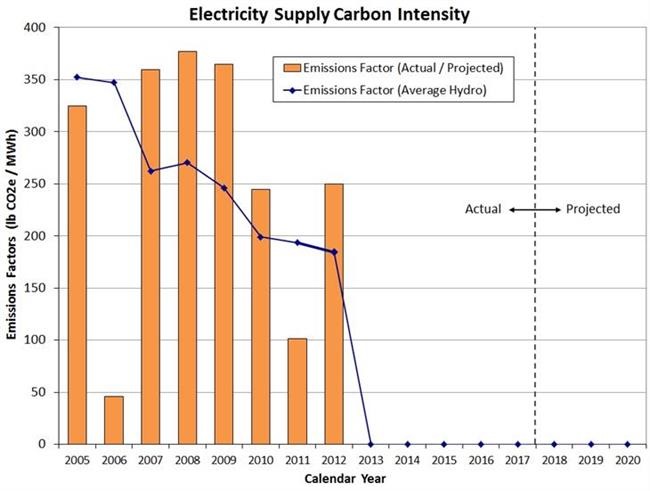Power Content Label

The City of Palo Alto Utilities is proud of its ongoing choice to invest in "clean" energy resources.
What is a Power Content Label?
California State legislation (SB 1305) requires all energy service providers, such as the City of Palo Alto Utilities (CPAU), to periodically inform their customers of the source of power they are being sold. This information is provided in the form of a Power Content Label.
The Power Content Label is like a nutrition label on food and is designed to help consumers make informed decisions when selecting an energy service provider or energy product. View or download Palo Alto's current residential and commercial Power Content Labels below.
Print Past Power Content Labels
More Background on Our Power Content Label
CPAU electric power sources include the Calaveras hydroelectric project, the Western Area Power Administration (Western) hydro-electric contract, long-term power purchase agreements with solar, wind and landfill gas facilities and other short-term contracts from the wholesale market. To the extent that CPAU makes any wholesale market power purchases (e.g., in a dry hydro year), that energy is categorized on the Power Content Label as coming from "Unspecified sources of power" because CPAU is unable to determine exactly what generation resource is producing that power.
Percentage changes occur each year depending on what electricity is available and which purchases best suit CPAU's needs and cost requirements in order to continue providing low rates.
Renewable Portfolio Standard (RPS)
In 2018, California adopted one of the most aggressive Renewable Portfolio Standard (RPS) policies in the country, requiring that all utilities in the state supply 60% of their retail electric sales from eligible renewable energy resources by 2030 and putting the state on a path to 100% fossil-fuel free electricity by 2045. However, the City has been pursuing renewable resources for well over a decade (having voluntarily adopted its own RPS target in 2002), and as the chart below shows, it has already exceeded the 60% RPS level as of 2018. The City is also continuing to aggressively pursue energy efficiency measures in order to ratchet down its total electricity consumption, and thus reduce the volume of renewable energy purchases that are needed to satisfy its RPS requirements.

Carbon Neutral Portfolio
In 2013 the City formally adopted a Carbon Neutral Plan, which commits the City to providing its customers with a 100% carbon neutral electricity supply. The City’s electric supply portfolio contains a variety of resources that are considered by the state to be "eligible renewable energy resources," which means that these resources can be counted towards the City’s RPS target. In addition, the City for many years has received electricity from large hydroelectric resources that provide a carbon-free power supply, but under California’s renewable energy eligibility criteria do not count towards the RPS target.
As shown in the chart below, the City currently provides its customers with a 100% carbon neutral electricity supply exclusively through its long-term renewable resource and hydroelectric contracts. (Although in a severe drought year, the City might need to purchase renewable energy certificates (RECs) to compensate for the generic market power purchases that would be required in order to satisfy overall electricity demand.) The City’s Power Content Label provides additional information about its electricity supply.

Map of the City of Palo Alto's Renewable Power Project Sites
Carbon Content of the Electricity Supply
Another way to illustrate the “carbon content” or “carbon intensity” of the City’s electric supply portfolio is to show the amount of carbon dioxide equivalent (CO2e) greenhouse gas emissions generated for each megawatt-hour (MWh) of electricity delivered to the City’s customers. The chart below illustrates the downward trend of the carbon content of the City’s electricity portfolio since 2005 as the City increased its purchases of renewable power supplies. Since the adoption of the Carbon Neutral Plan in 2013, the carbon content of the City’s power has been zero (on an annual average basis), and it is expected to remain at that level going forward.
